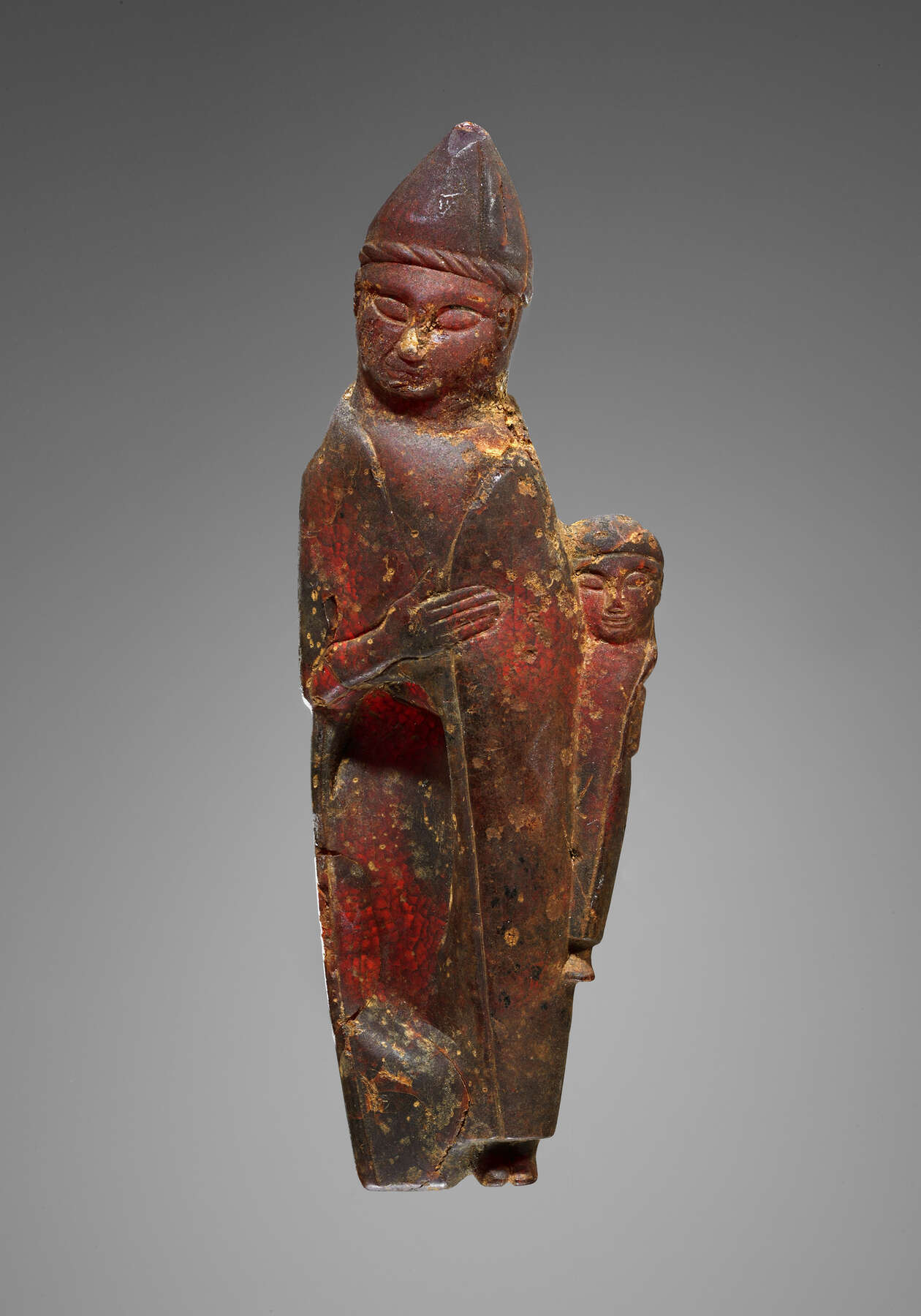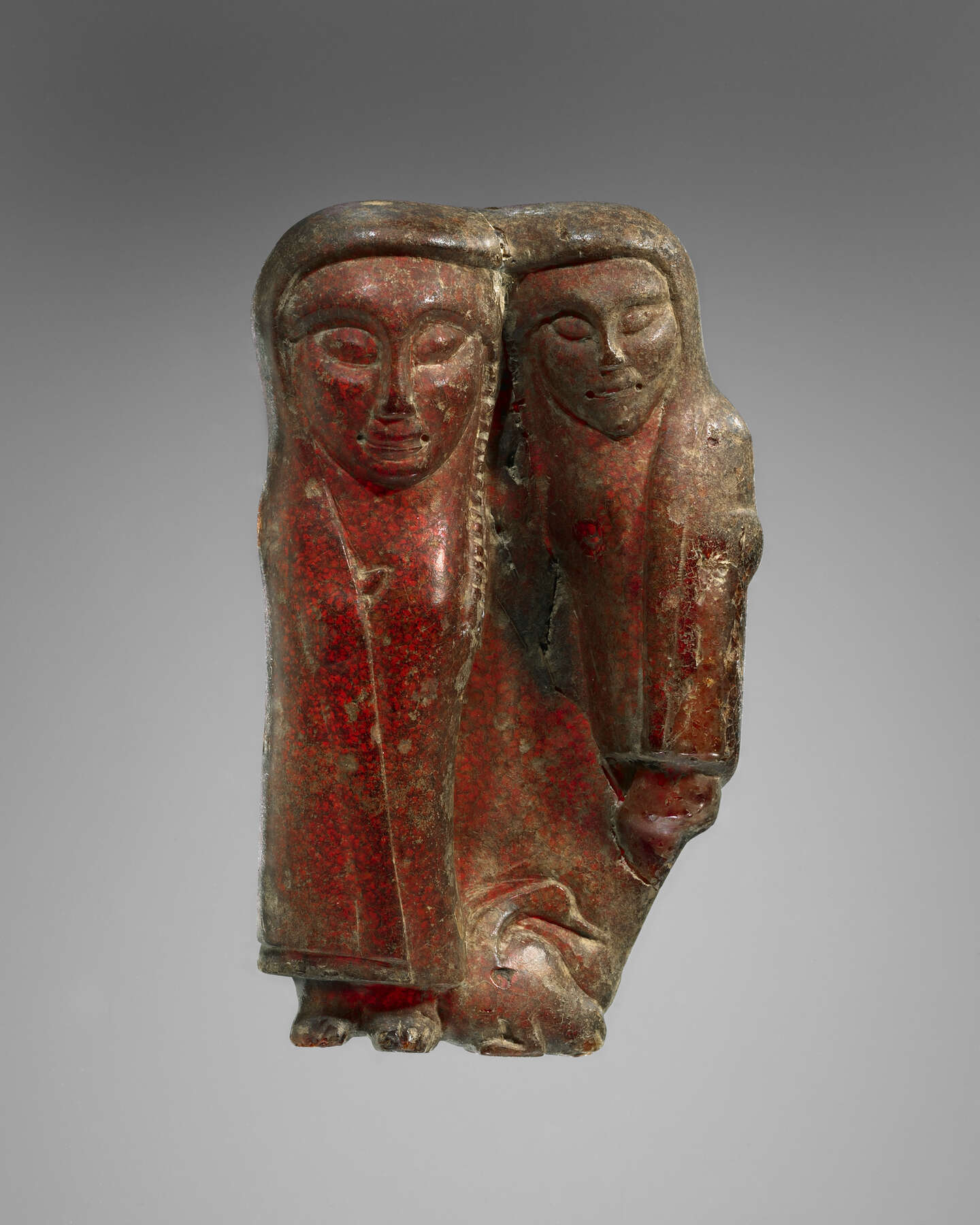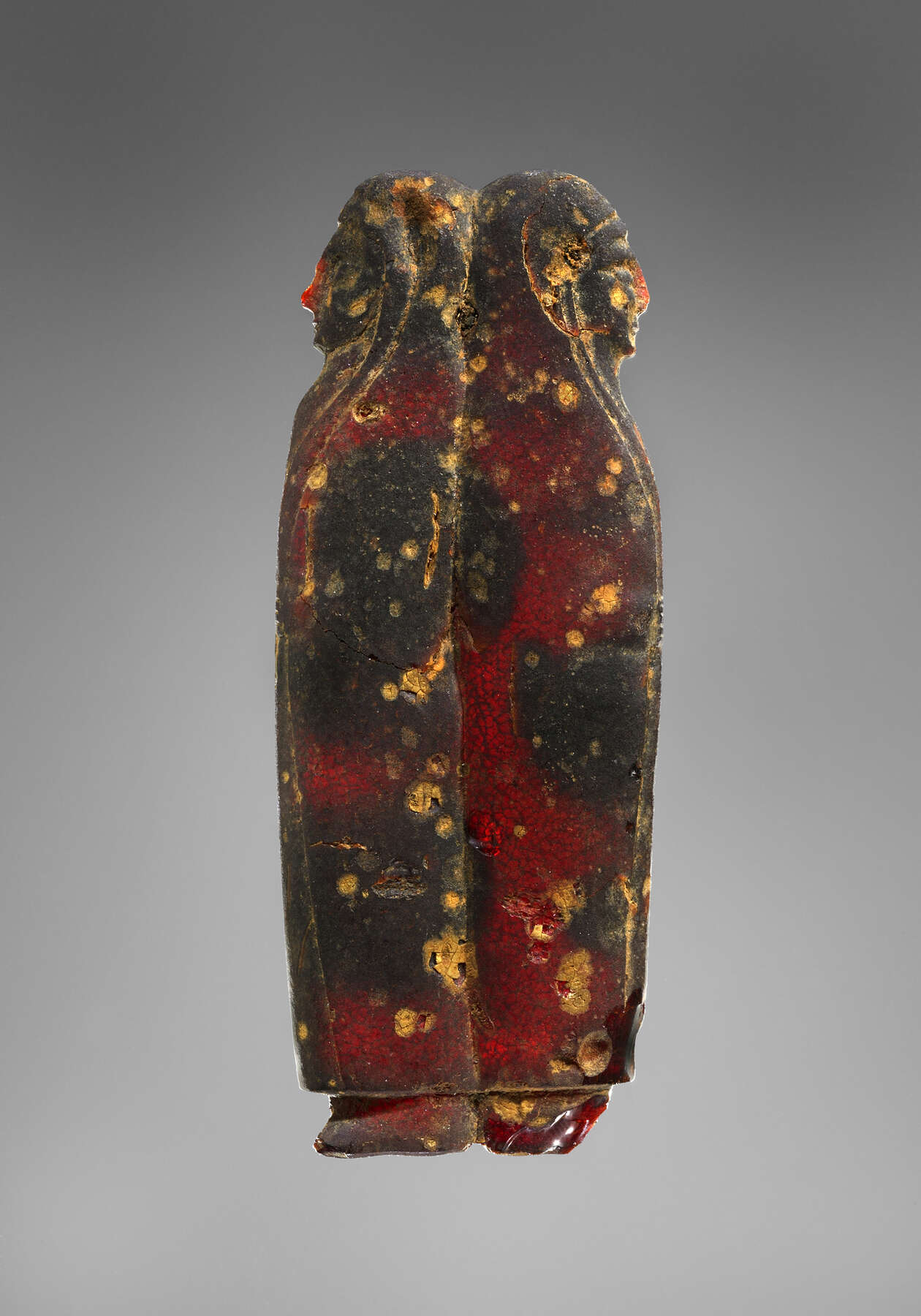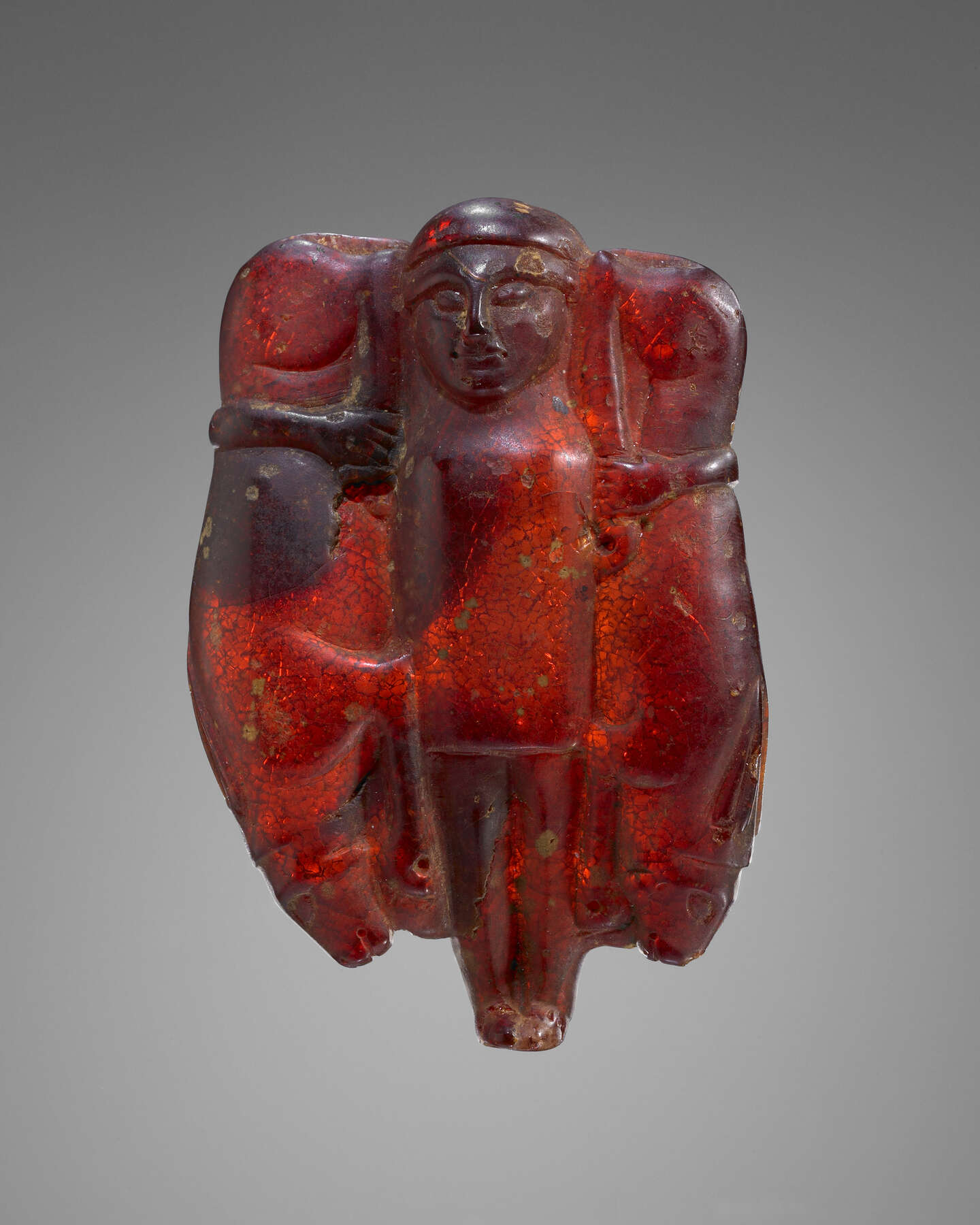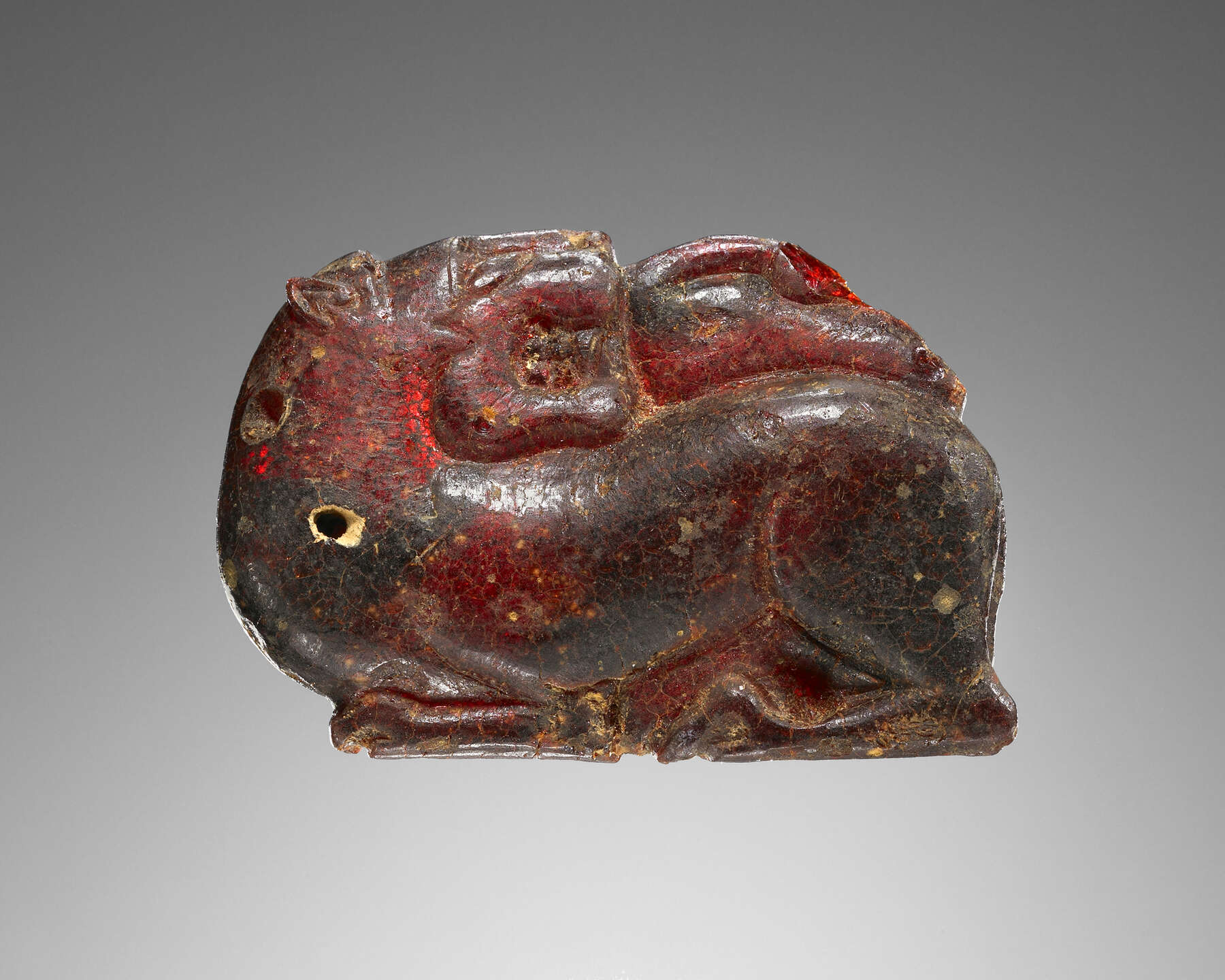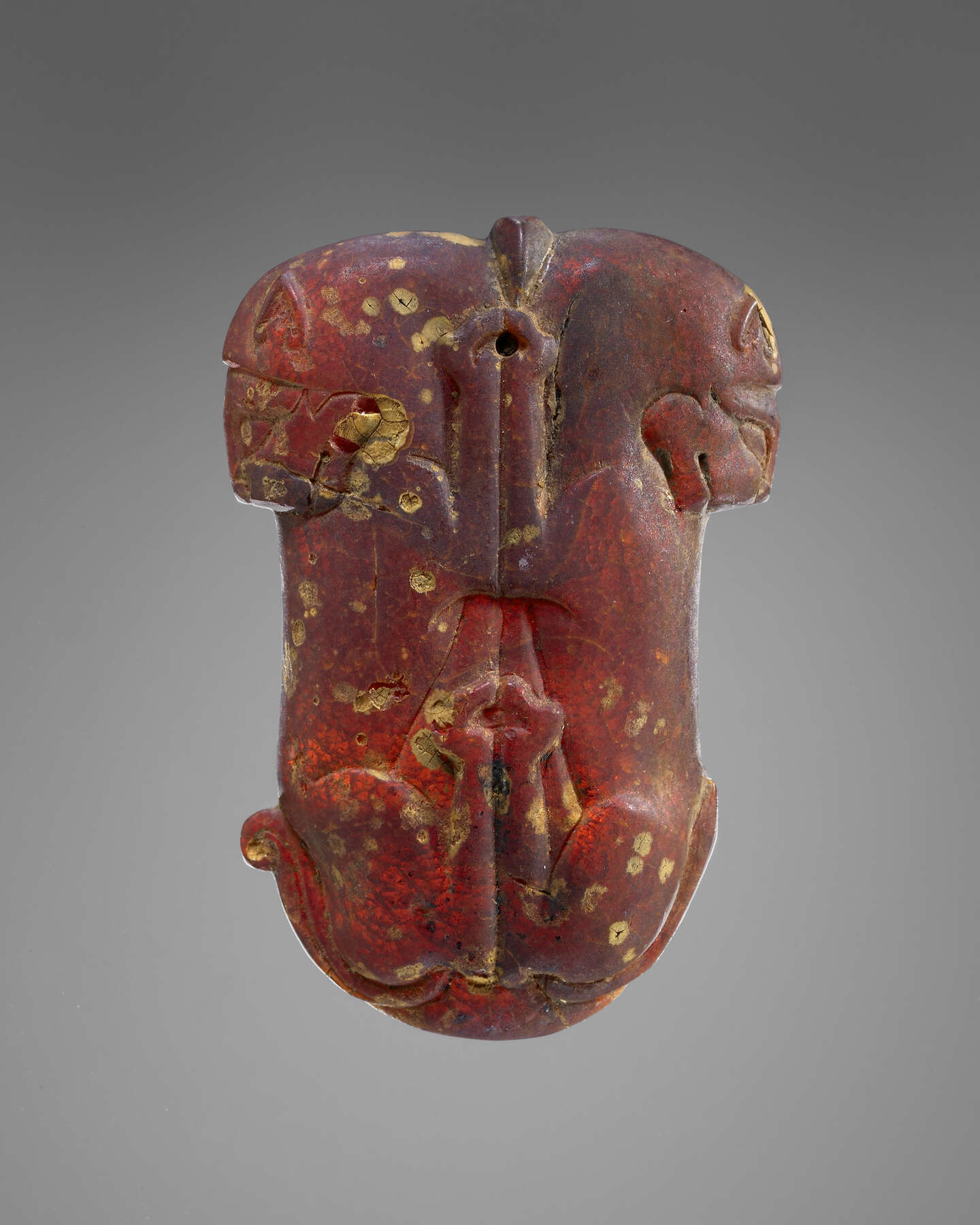The first six objects presented here, Female Holding a Child (Kourotrophos) (, cat. no. 1), Female Holding a Child (Kourotrophos) with Bird (, cat. no. 2), Addorsed Females (, cat. no. 3), Divinity Holding Hares (, cat. no. 4), Lion with Bird (, cat. no. 5), and Paired Lions (, cat. no. 6), are similar in style, technique, state of conservation, and size. Subject also relates them. Because of this, and because the six were part of the same donation, it is posited that they come from the same original context.
As is argued below, the six were produced in northern internal Etruria in the first half (or perhaps in the third quarter) of the sixth century B.C. and have stylistic connections to Greek Arcadian and Ionian small bronzes, as well as to contemporary Etruscan votive bronzes, relief work, and bucchero. All can be shown to have specific ties to subjects and styles current in the Near East and Cyprus. The North Syrian and “Phoenician” aspects are salient.
These objects would have belonged to an elite person. The size alone of the largest three pendants would have signaled their exceptional value even before craftsmanship transformed the lumps of amber into traditional subjects of great power and status. As ornaments and amulets, the ambers could not but have made a spectacular impression, if only because of the optical characteristics of the rare material and its associations. The imagery enhanced the amber’s value. The age-old vocabulary that gave form to these glistening jewels made them good luck–inviting, danger–averting, protective objects. Although there are no close parallels in amber or other media for the individual works or the group, they belong to the vocabulary, iconography, and styles of Etruscan Orientalizing art. The subjects are women, children, and wild fauna—lions, hares, and migrating waterfowl. In format, the six include three heraldic compositions, a squared-up group of a lion with its prey, and two pairs of an adult and child in a side-by-side pose.
All six ambers are better understood when looked at in the context of contemporary and slightly earlier production from Greece, especially from the Peloponnesus and South Ionia, as well as ivories, bronzes, gold, faïence, and shell carvings from the Near East and Cyprus, including Cypro-Phoenician objects, and Orientalizing carved ambers and ivories from Picenum and Latium. This is a range similar to the visual vocabularies of other Orientalizing amber and ivory carvings, as carefully analyzed by A. M. Bisi and G. Rocco (for Picene ivory and bone carvings), P. G. Warden (for four “Picene” ambers in the Museum of Archaeology and Anthropology, University of Philadelphia), and D. J. Waarsenburg (for ambers from Satricum in the Villa Giulia).1 Similarly rich stylistic and iconographic links are characteristic of some Orientalizing bronze reliefs, Praenestine ivory work, and Felsine stelai, and many of the small finds from Samos, a number of unique carvings in wood and in ivory in particular.2 Because of the Etruscan aspects of the Italian-provenanced works, it seems most likely that they all were produced on the peninsula for locally based commissioners and purchasers.
The realia of the amber figures’ thoroughly Etruscan dress is matched by the waterfowl depictions. The bird of is a white-fronted goose, and that of the Lion with Bird pendant () a mute swan. These species have long histories in the ancient world and its art, and both long-necked waterfowl accrued a rich lore and symbolism. The species are highly distinctive migrants to Italy and elsewhere in Europe, and both are excellent table fare. The hare, too, is good eating.
Each of the six might also have been read as incorporations, or as symbolic, of a female nature divinity. This may be the principal divinity of popular Etruscan religion, who was worshipped in a variety of forms and under different names.3
Although the six may have been used during the life of one or more powerful persons, some of their iconography seems to be funerary: the right-hand-on-breast gesture made by the figures of , , and , the common mantle of , and the hares of may have held special funerary meaning. Further study may support the identification of the large female figures as divinities with chthonic as well as afterworld aspects; the same may be true of the waterfowl and hares. Individually and as a group, the six remarkable ambers invite questions about their commissioning, making, owning, and burial. At this point, it is feasible to interpret these as the property of one or more political-ceremonial specialists, and to posit that these amulet-ornaments may have served as insignia.4
There are only a few documented pre-Roman burials with significant numbers of figured ambers. All such intact, published graves also included numerous other high-status objects, providing not only evidence of the elaborate rituals that accompanied the deceased, but also a glimpse of ideas about the tomb and the afterworld. These comparison burials, which are rich in figured amber, also contain nonfigured amber beads and pendants, plus many other high-value objects, of bronze, precious metals, ivory, or ceramics, among their durable goods. Textiles and other now-perished organic goods that must have accompanied the deceased have left few traces. These six pendants, then, may be evidence of what must have been an extraordinary burial.
Notes
- A. M. Bisi, “Due avori piceni di tradizione vicino-orientale,” Studi urbinati di storia di filosofia e letteratura Urbino, ser. B, 3, 55 (1981–82): 79–83; and A. M. Bisi, “Componenti siro-fenicie negli avori piceni,” in La civiltà nelle Marche: Studi in onore di Giovanni Annibaldi (Ripatransone, 1992), pp. 128–39, shaped my argument originally. See also ; ; and . ↩
- outlines the issue succinctly. was instrumental to my study of this group of ambers. ↩
- H. Nagy, “Divinities in the Context of Sacrifice and Cult on Caeretan Votive Terracottas,” in , p. 221. She refers to A. Pfiffig, Religio Etrusca (Graz, 1975), p. 98. and discuss in detail the representation of the Great Mother in the Orientalizing period, with special attention to Astarte. There is a visible absorption of a female nature divinity’s aspects by several female and male divinities, but the concept of a Great Goddess is fraught, as points out. ↩
- For this idea, compare the placing of certain ritual pre-Columbian gold objects in the graves of political-ceremonial specialists by other specialists. For example, in the Costa Rican Guanacaste and Central regions, finds from funerary contexts show that both new and previously used objects were deposited. Some are local, but there is also evidence of interchanges from around the region. The production of sumptuary and ritualistic objects in diverse materials suggests the existence of such specialists, who required the use of insignia associated with those possessions that, at some point, were deposited in graves. The archaeological evidence suggests that during the period of A.D. 300–800, as these societies became more hierarchical, with greater social stratification, there was greater consolidation of experts in political-ritualistic activities, and the number and quality of grave offerings increased and changed. There is also evidence, represented by images in clay, of women carrying out various roles. See, for example, S. K. Lothrop, Archaeology of the Diquis Delta, Costa Rica, Papers of the Peabody Museum of Archaeology and Ethnology at Harvard University 51 (Cambridge, MA, 1963). ↩
Bibliography
- De Puma and Small 1994
- De Puma, R., and J. P. Small, eds. Murlo and the Etruscans: Art and Society in Ancient Etruria. Madison, WI, 1994.
- Moorey 2004
- Moorey, R. S. Catalogue of the Ancient Near Eastern Terracottas in the Ashmolean. Oxford, 2004.
- Rocco 1999
- Rocco, G. Avori e ossi dal Piceno. Rome, 1999.
- Strøm 1971
- Strøm, I. Problems Concerning the Origin and Early Development of the Etruscan Orientalizing Style. 2 vols. Odense, 1971.
- Waarsenburg 1996
- Waarsenburg, D. J. “Astarte and Monkey Representations in the Italian Orientalizing Period: The Amber Sculptures from Satricum.” In Die Akten des Internationalen Kolloquiums “Interactions in the Iron Age: Phoenicians, Greeks and the Indigenous Peoples of the Western Mediterranean” in Amsterdam am 26. und 27. März 1992, Hamburger Beiträge zur Archäologie 19–20 (Mainz, 1996), pp. 33–71.
- Waarsenburg 1995
- Waarsenburg, D. J. The Northwest Necropolis of Satricum: An Iron Age Cemetery in Latium Vetus. Amsterdam, 1995.
- Warden 1994
- Warden, P. G. “Amber, Ivory, and the Diffusion of the Orientalizing Style along the Adriatic Coast: Italic Amber in the University Museum (Philadelphia).” In Murlo and the Etruscans: Art and Society in Ancient Etruria, edited by R. De Puma and J. P. Small, pp. 134–43. Madison, WI, 1994.
